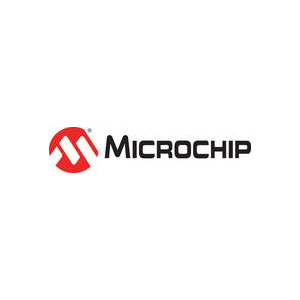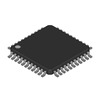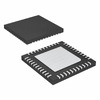Manufacturer Part Number
AT89LS51-16JU
Manufacturer
Microchip Technology
Introduction
The AT89LS51-16JU is an 8-bit microcontroller from Microchip Technology's 89LS series, designed for embedded control applications.
Product Features and Performance
8051 Core Processor for proven performance
8-Bit Core Size suitable for a wide range of applications
16MHz Operating Speed for faster processing
UART/USART Connectivity for serial communication
Integrated Watchdog Timer (WDT) for system reliability
32 Number of I/O pins providing generous external interfacing
4KB FLASH Program Memory for code storage
128 x 8 RAM Size for variable storage
Internal Oscillator reducing external components
Surface Mount 44-PLCC Package for compact design
Operating Temperature range of -40°C to 85°C supporting extreme environments
Product Advantages
Flash Memory allows for in-system reprogramming
Broad Operating Voltage Range (2.7V to 4V) for flexible power supply
High I/O count for extensive peripheral interfacing
Integration of core features saves addition of external components
Key Technical Parameters
Core Processor: 8051
Speed: 16MHz
Program Memory Size: 4KB
RAM Size: 128 x 8
Voltage Supply: 2.7V ~ 4V
Number of I/O: 32
Mounting Type: Surface Mount
Package/Case: 44-LCC (J-Lead)
Operating Temperature: -40°C ~ 85°C
Quality and Safety Features
Wide operating temperature range for high reliability
Watchdog Timer for system stability and protection against crashes
Compatibility
Compatible with 8051 based hardware designs
UART/USART interface support for serial communication devices
Application Areas
Industrial Control Systems
Consumer Electronics
Automotive
Telecom Infrastructure
Home Appliances
Product Lifecycle
Obsolete product status
Replacement or upgrades may be available
Evaluation should be made for the last time buy options or migration to new models
Several Key Reasons to Choose This Product
Trust of Microchip Technology as a leading manufacturer
8051 core popularity for ease of development and wide community support
High integration and features to minimize design complexity and cost
Good balance between performance and power consumption
Availability of resources and documentation for development and troubleshooting
Proven success in a wide range of applications, ensuring reliability





 AT89LS52-16JUMicrochip TechnologyIC MCU 8BIT 8KB FLASH 44PLCC
AT89LS52-16JUMicrochip TechnologyIC MCU 8BIT 8KB FLASH 44PLCC AT89LS51-16PUAtmelIC MCU 8BIT 4KB FLASH 40DIP
AT89LS51-16PUAtmelIC MCU 8BIT 4KB FLASH 40DIP AT89LP828-20AUMicrochip TechnologyIC MCU 8BIT 8KB FLASH 32TQFP
AT89LP828-20AUMicrochip TechnologyIC MCU 8BIT 8KB FLASH 32TQFP AT89LS52-16JUAtmelIC MCU 8BIT 8KB FLASH 44PLCC
AT89LS52-16JUAtmelIC MCU 8BIT 8KB FLASH 44PLCC AT89LP6440-20PUAtmel
AT89LP6440-20PUAtmel AT89LP6440-20MUAtmelIC MCU 8BIT 64KB FLASH 44VQFN
AT89LP6440-20MUAtmelIC MCU 8BIT 64KB FLASH 44VQFN AT89LS51-16PUMicrochip TechnologyIC MCU 8BIT 4KB FLASH 40DIP
AT89LS51-16PUMicrochip TechnologyIC MCU 8BIT 4KB FLASH 40DIP